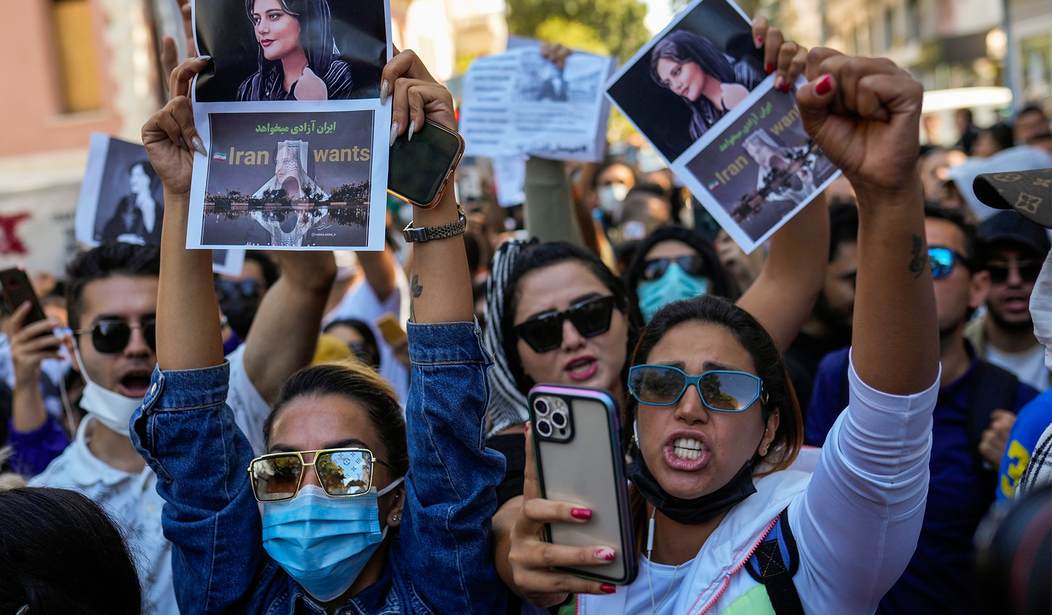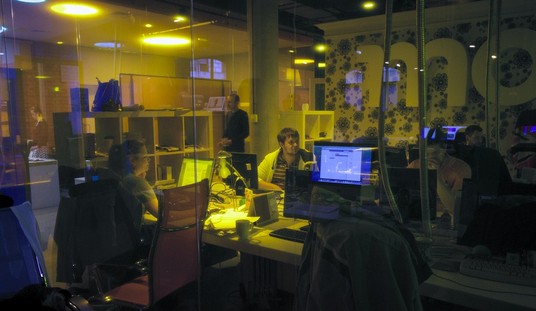The Iranian authorities haven’t been very discriminating in firing live ammunition into the crowds of protesters screaming for freedom from the religious and political tyranny they live under. Iran Human Rights, an organization based in Norway, said on Saturday that at least 19 children have been killed in protests across Iran since mid-September.
Most notably, two sixteen-year-old girls were killed while confronting regime forces. Sarina Esmailzadeh was murdered on September 22, beaten to death by the police; Nika Shakarami, another 16-year-old girl, was killed a few days later. Authorities claim that Shakarami jumped off a building, but her mother says police beat her to death.
The authorities appear to be targeting younger girls who are protesting the death of Mahsa Amini while in the custody of the Morality Police.
Urgent;
I call on @UNICEF to take action immediately.
The Islamic Republic security forces force attacked these school girls in their high school. Teenager who took this video says, police savagely beaten our classmates & took arrested them. #MahsaAminipic.twitter.com/vcjq9ugXUM— Masih Alinejad 🏳️ (@AlinejadMasih) October 9, 2022
As her case gained attention online, Iranian authorities denied any responsibility Friday, claiming she died by suicide by jumping off a roof. But the details of Esmaeilzadeh’s death in the city of Karaj, west of Tehran, fit into a broader pattern of security forces targeting, arresting and, in some cases, killing minors as Iran’s anti-government uprising enters its fourth week.
Esmaeilzadeh “died after being severely beaten in the head with batons,” according to Amnesty International, which reported her death Sept. 30 and said she was one of at least 52 people killed by security forces up to Sept. 25, an account later corroborated by other rights groups.
Nika Shakarami was seen on video on September 20 standing on a dumpster and waving her burning hijab. She later disappeared after telling a friend she was being chased by police.
The regime targeting children is nothing new. Amnesty International reports that at least 23 children were killed in protests over a fuel price hike in 2018.
The crackdown targeting children is especially vicious in restive regions like Kurdish Iran and Baluchestan. It was in the Kurdish city of Saqez—Amini’s hometown—that the protests started. Now, Amnesty International says that there are reports of mass killings by security forces in Sanandaj, a Kurdish city,
Recent reports say that Iran has dispatched masses of security forces to Sanandaj and that there are fears that people are being massacred. Amnesty International has said that it “is alarmed by the crackdown on protests in Sanandaj, Kurdistan province, amid reports of security forces using firearms and firing teargas indiscriminately, including into people’s homes.”
Sources say the city has become a war zone and is cut off. This has been the case for weeks as many people in the Kurdistan region say they cannot reach their relatives and the Iranian regime has tried to cut off communications, especially the internet.
This is in contrast to Tehran, as the hand of the Iranian regime appears to be targeting Kurds in the country with extreme violence.
Recent reports suggest Revolutionary Guard forces—the security forces who do most of the regime’s wet work—opened fire on protesters.
New video of security forces shooting in #Sanandaj #Iran#Mahsa_Amini
— Sima Sabet | سیما ثابت (@Sima_Sabet) October 11, 2022
Sanandaj is the beating heart of Iran❤️❤️✊✊#مهسا_امینی#سنندج#MahsaAmini pic.twitter.com/dKLCeyAqCJ
— Alireza Enferad🏴 (@AlirezaEnferad) October 10, 2022
It’s a truly remarkable thing to see hundreds of thousands of women—previously beaten down, treated like slaves, and denied the most basic rights—rising up and telling the Iranian authorities they’ve had enough. When people are so angry at their station in life that they don’t fear bullets as much as they do a continued existence under the yoke of oppression, the authorities have already lost.
And they know it.










